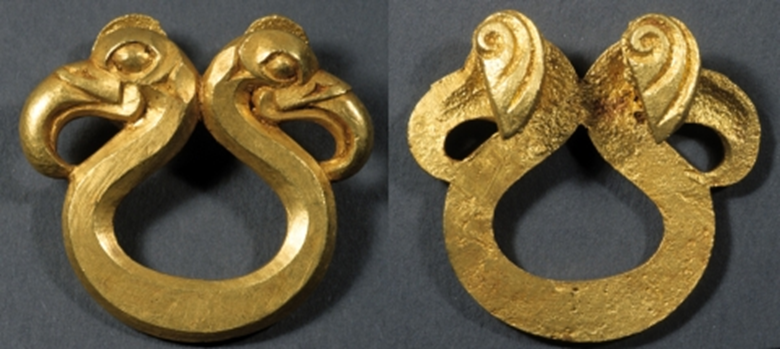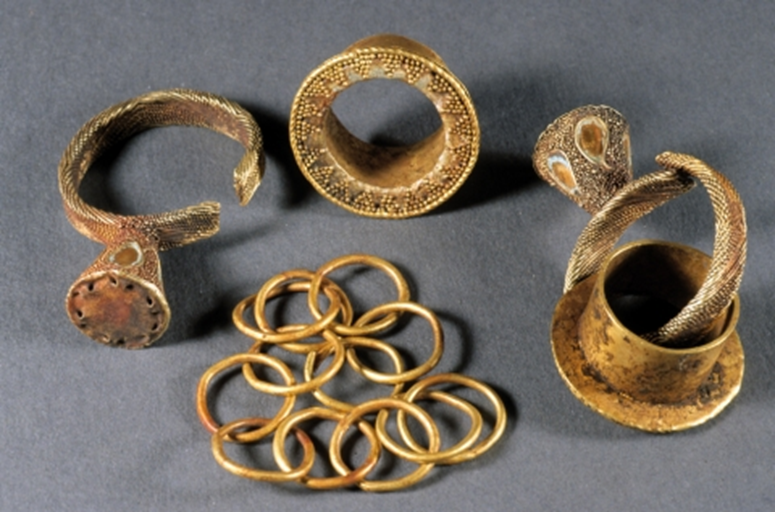Archaeologists find gold jewelry in an archaeological complex of the “Scythians”

Archaeologists discovered a mound in which the Scythians were buried dating back to the fourth century BC, near Simferopol, where they found a large number of artifacts.
Among the artifacts were gold ornaments of the Scythian nobles. This was stated in a press release issued by the Institute of Archeology of the Russian Academy of Sciences.
The researcher at the Institute of Archaeology, Irina Rukavishnikova, said: “We were able to discover an archaeological complex that was not exposed to any external influence, which is a rare thing for the Scythian mounds, most of whose contents were stolen in ancient and modern times.”

The complex architecture of the astonishing finds suggests a tomb of a noble Scythian family.
It is noteworthy that excavations began in the area this spring by order of the head of one of the companies responsible for constructing a road along the city of Simferopol in its section that connects the town of Donskoy to the village of Perevalnoye.
During these excavations, scientists discovered many Scythian artifacts from ancient Greek times, and also discovered traces of a stone wall surrounding the hill in the distant past.

Scientists discovered a perfectly preserved crypt, inside which they studied many unknown details about how the ancient Scythians built the tombs of their nobles. Archaeologists also discovered a mass grave, where 6 people were buried at different times.
Some bodies of deceased Scythians were decorated with gold jewelry, including patches with images of griffons (mythological animals), as well as gold earrings and other ornaments that were supposedly attached to the clothing of the nobility. Moreover, scientists found in the crypt a large number of bronze arrowheads and part of an iron spear.
Irina Rukavishnikova said that a large number of ornaments and jewelry allowed Russian scientists to reconstruct the appearance of the uniforms of the nobles who lived in the foothills of the mountains in the Crimean Peninsula in ancient times.

Who are the Scythians?
The Scythians or Scythians (from Greek: Σκυθία) are a nomadic, mobile people of Iranian origin. They are from the Kingdom of Scythia (Scythia), replacing the Sirians who had come from the steppes of Russia. The Scythians migrated from the plains of Eurasia to southern Russia in the 8th century BC, and settled west of the Volga River, north of the Black Sea, where they were connected to the Greek colonies around the Black Sea.
Today it is known as Crimea (Ukraine). The Scythians were able to establish a rich and powerful empire that lasted for many centuries before they were subjugated by the Sarmatians between the 4th century BC until the 2nd century AD.
Most of what we know today about the history of the Scythians comes from accounts recorded by the ancient Greek historian Herodotus, who had visited their country. These records were published after being studied by Russian anthropologists. The Jewish historian Josephus Flavius also wrote about them and described them as the people of Magog.

The Scythians aroused the admiration and fear of their neighbors for their agility and valor in wars and battles, especially for their skill in equestrianism, as they were among the first peoples to master horse riding.
Source: websites

